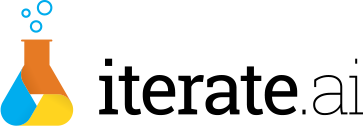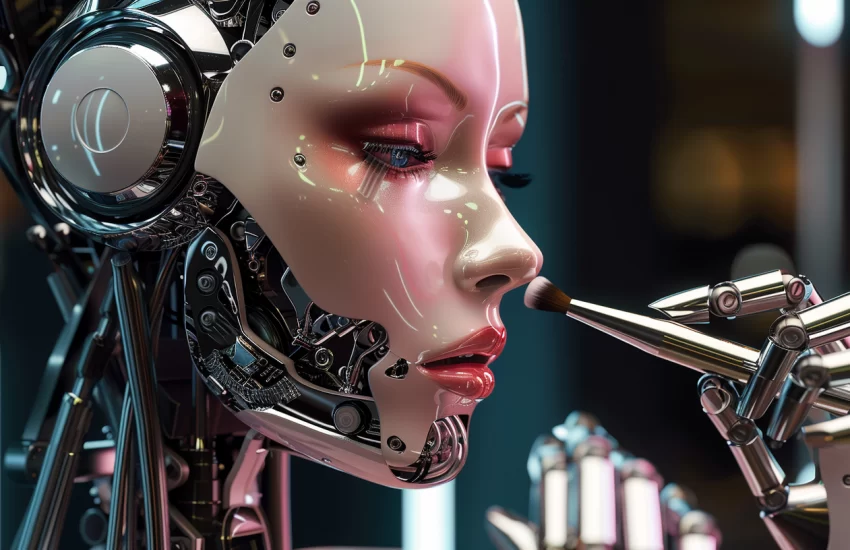The recent explosion of Generative AI has demonstrated the revolutionary capabilities that AI offers to our daily lives. AI, as a general concept, has been used for the past decade; existing through integrated forms of automation (e.g., spam filters, video recommendations, and search results.) However, generative AI has improved the more salient aspects of our everyday lives, like our beauty and hygiene.
One field that is seeing significant strides in innovation due to AI is the $580B beauty industry. AI has allowed for more scientific and mathematical approaches to our personal aesthetic including hair care, skincare, nail services, and fragrances.
AI in Skincare
Traditionally, skincare has been plagued with biased recommendations due to the exclusion of BIPOC (Black, Indigenous, People of Color) individuals within existing beauty datasets. An MIT study found that some computer vision applications released by major tech companies and touted to have a 97%+ accuracy have been tested on datasets with a large majority of its participants being white (83%). This blatant bias in computer vision applications has resulted in a history of inaccurate and irrelevant results for people of color.
Some providers have tackled this issue through the use of expensive, salon-grade equipment that analyzes faces on an Ultraviolet and Polarized Light level. This allows for skin to be viewed in a more objective manner that traditional cameras cannot achieve. Combined with an existing dataset of scanned skin samples, reinforcement learning can be applied to integrate a pattern matching AI for any input face. Of course, using this equipment requires either an in-person salon appointment as exemplified by Lancome’s Skin Consultation service, or an $8000 price tag to purchase the scanner.
On a more consumer-grade level, AI startups, as well as some big players such as Estee Lauder, have delved into the development of smartphone-enabled skin analysis, taking advantage of high quality camera(s) featured on modern smartphones. Through the submission of a simple selfie taken with one’s smartphone camera, an on-demand service for personalized skin health analysis and skincare recommendations becomes a viable option. However, the smartphone selfie approach features a significant challenge, how does one account for different lighting conditions?
One such startup is RingoAI. RingoAI has taken a clever and innovative approach to the smartphone selfie: they flash multiple colored screens such as Red, Green, and Blue at the user during selfie capture, effectively simulating hyperspectral imaging. Traditionally used by NASA to capture geographic topological images, hyperspectral imaging requires heavy equipment such as special cameras, and advanced sensors to achieve. RingoAI has circumvented this equipment requirement through its patented color flash method. By simulating and receiving similar results to hyperspectral imaging, RingoAI has trained an AI through linear regression that analyzes the spectral image of an input selfie, obtains the line-of-best-fit for one’s complexion, and matches that line with scientific datasets of true skin tone.
The integration of AI in skincare promises a future of enhanced personalization, accuracy, and easy usability. As AI algorithms continue to evolve and learn from more inclusive datasets, the skincare industry can expect even more precise advancements, enabling individuals to achieve hyper-personalized recommendations for skin health and beauty.
AI in Hair Care:
No different from skin care, hair care is another subsector within the beauty industry that has favored white individuals. In this case, straight, thin, lighter hair. This causes many traditional models to discriminate against thicker, textured, coilier hair.
A new startup that is solving this beauty bias is Myavana, a textured hair AI analysis startup. With a team of scientists and AI engineers, Myavana has analyzed and logged the chemical composition of a growing database of textured hair types. A smartphone-captured photo of one’s hair will conduct an AI pattern matching search to find one’s exact hair condition and type.
Hair customization is also seeing prominence in the hair domain. The L’Oréal ColorTry service employs image recognition AI on an input selfie to simulate realistic hair color transformations for any hair color product, allowing users to experiment and select the perfect shade that suits their style.
Even consumer goods are seeing innovative advancements through AI. The GHD Platinum+ Hair Flat Iron has a built-in AI heat monitoring system, automatically adjusting temperature to prevent possible hair damage. L’Oréal also offers a handheld scalp and hair diagnosis device, dubbed K-Scan, that allows white light, cross polarized, and UV scanning of one’s scalp to obtain information on dandruff, bacteria, redness, irritation and surface features. Trained on over 12000 scalp images, exact scalp types and precise diagnoses are provided.
AI in Nails:
Nail services are notoriously manual. Nearly every facet of the nail care and personalization experience depends on manual labor. With advanced robotics and computer vision, the nail industry is starting to see the onset of hardware automated nail polish applicators. Similar in size and weight to traditional printers, nail polish applicators such as Clockwork and Nimble accept an input hand, analyzing features of the nails such as curvature and thickness to provide a quick and flawless nail polish coat.
Startup 10Beauty is the first of its kind that handles the entire manicure process, including cuticles, shaping, and removal, in addition to the nail analysis and polish application.
Some nail applicator hardware includes companion mobile applications where users can browse or upload different nail designs to be applied instantly. One Chinese company, O2 Nails, features a creator economy nail-style app store, where users can upload their nail designs and sell the design which users can then apply directly to their nails. With generative AI, specifically image generation, different designs can be produced on the fly and allow for a complete personalization and unique nail art designs. Combined with a creator economy, nail artists can share and sell their designs.
AI in Fragrances:
Fragrances and perfumes are subjective, with its desirability beholden to the individual itself. A perfect fit for one may be opposed by another, and the only true test to determine one’s preference for aromas is through direct and tedious experimentation. L’Oréal has chosen to scientifically address this process through the utilization of an EEG scanner to find the perfect fit for one’s aromatic preferences. Partnered with neuroscience startup Emotiv and developed under the L’Oréal Technology Incubator, customers can attend a fragrance consultation service, where they don a multi-sensor EEG helmet and live brain wave activity is fed into a trained machine learning model that can accurately sense and monitor behavior, preferences, stress, and attention. This allows for a hyper-personalized and scientific approach towards finding the optimal smell for one’s tastes.
L’Oréal is no stranger to beauty advancements, and this intersection of AI, neuroscience, and fragrances is truly a unique way to approach such an archaic subfield.
Conclusion:
Generative AI has undeniably transformed the beauty industry, making a profound impact across a variety of different beauty subfields. Through AI algorithms and data-driven insights, AI has revolutionized the way we approach beauty, personalizing our experiences and enhancing our self-expression. AI will continue to find its place in different aspects of our daily lives, and will ultimately revolutionize the way we perceive the world.

